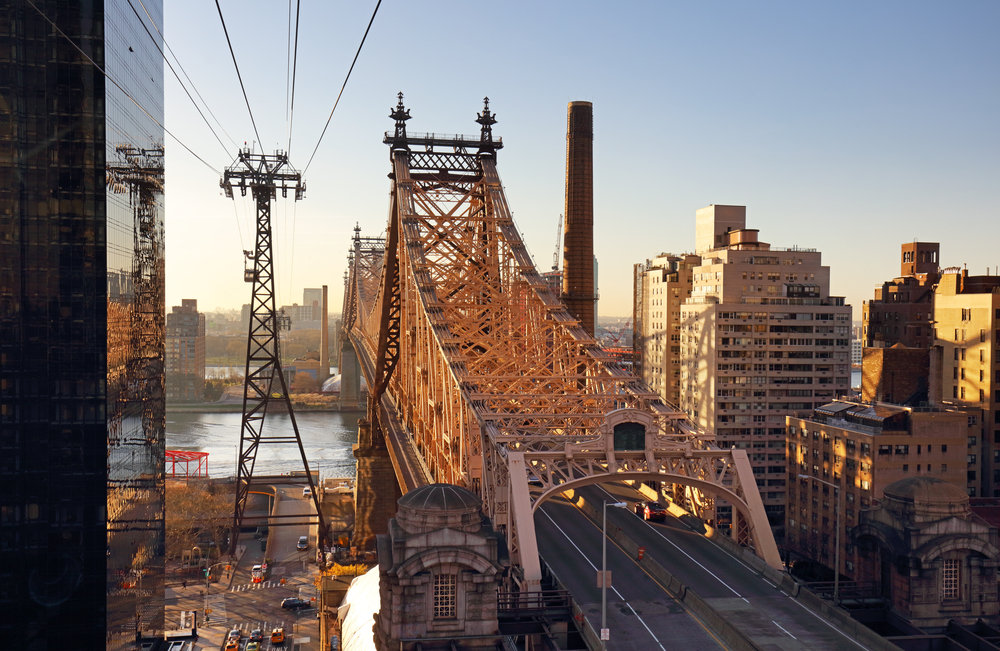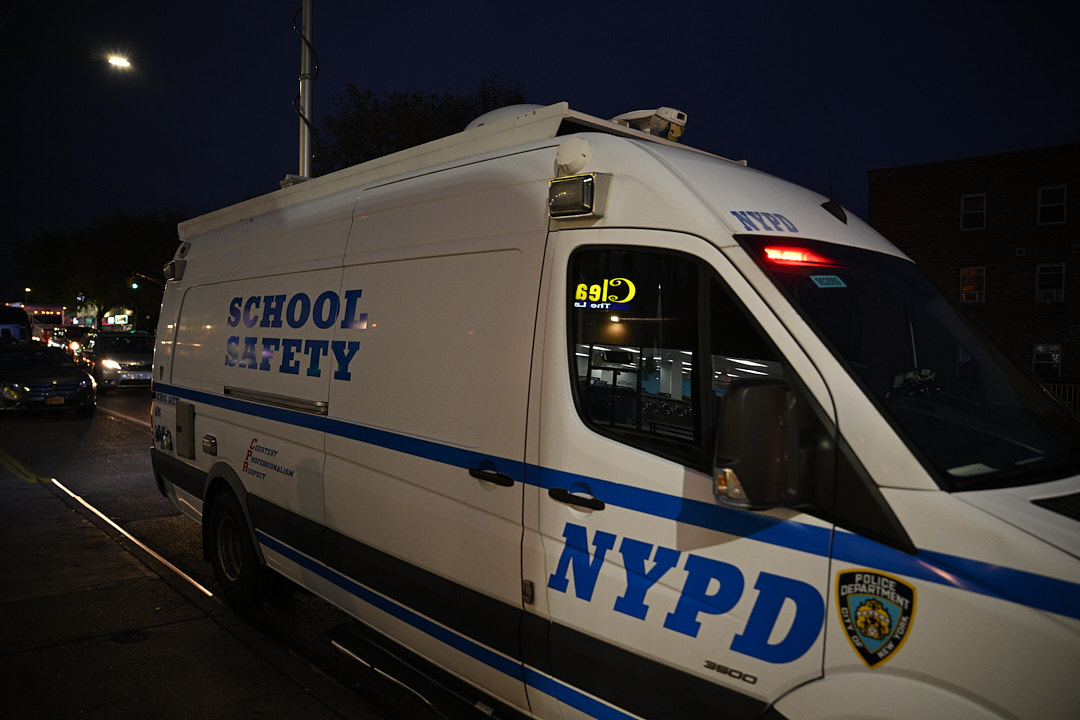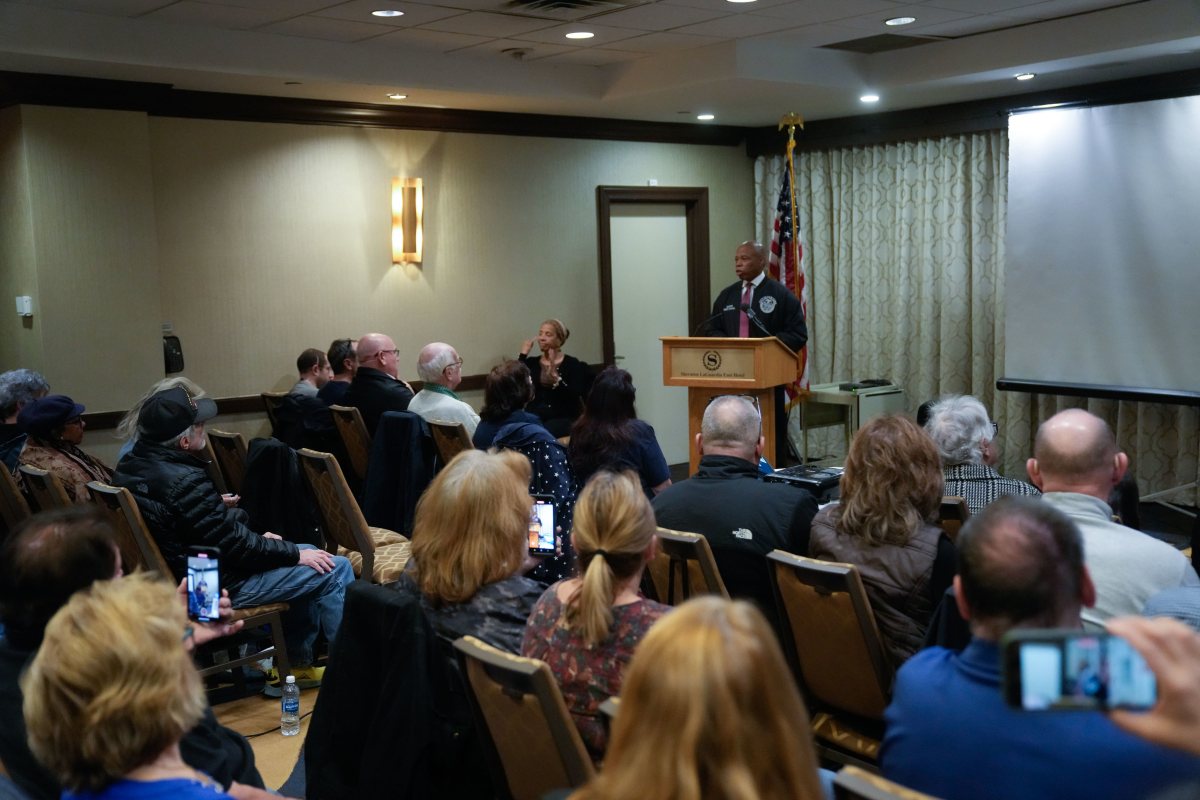By Julie Shapiro
The city said thanks, but no thanks, this week to General Growth Properties’ offer to build a school in the Seaport.
The developer volunteered to build the school as an amenity connected to its proposed overhaul of Pier 17 after hearing from parents that Lower Manhattan’s schools are straining at their seams.
Marge Feinberg, spokesperson for the Department of Education, said the city’s numbers do not show a need for a new school in the Seaport, although the agency did not define the boundaries of the neighborhood and also suggested the Financial District, which borders the Seaport, could need another school.
The city made its projections as part of its 2010-2014 capital plan, released last week. That same plans identifies a need for school seats in many Lower Manhattan neighborhoods.
Feinberg this week acknowledged that it can be tough for the city to find sites for potential schools, but she said a school in the Seaport just wasn’t necessary.
The Financial District-Seaport area is already getting a 630-seat pre-K-8 school on Beekman St. in 2010 or 2011. On the other side of Lower Manhattan, P.S./I.S. 276 is scheduled to open in the southern end of Battery Park City in 2010 with 952 seats.
The D.O.E.’s capital plan will add an additional 3,046 new school seats to District 2 and will look to redraw the district’s elementary school lines in an effort to relieve overcrowding. District 2 covers many neighborhoods from Lower Manhattan to the Upper East Side, and the D.O.E. would not guarantee any of the capital plan’s new school seats would be below Canal St.
Parents and education activists have already begun to mobilize against the capital plan, which still has to go through public review before the City Council votes on it next spring.
Several parents said the D.O.E. should reconsider General Growth’s offer to build a school.
“It would be extremely surprising for them to turn down such a great offer,” said Tricia Joyce, a P.S. 234 parent who has fought against overcrowding.
Parents have said that Lower Manhattan will still need an additional 804 elementary seats once the two new schools open.
General Growth agrees with the parents’ projections, and a spokesperson said this week that the company still stands behind that data.
“While we’re disappointed in [the Department of Education’s] finding, we are undeterred in our commitment to a school,” said Ben Branham, a spokesperson for General Growth. He said General Growth would work with parents to try to change the city’s mind.
General Growth would include the school as an amenity if the company’s proposed redevelopment of Pier 17 moves forward. Even if the D.O.E. comes around, General Growth still faces many government approval hurdles on the Seaport redevelopment and also has to contend with a plummeting stock price and is considering bankruptcy.
Lower Manhattan parents hotly anticipated the D.O.E.’s capital plan, hoping it would provide solutions to the overcrowding they see. But the 185-page plan offers little for Downtowners to hang their hopes on, promising only that some new school seats will be added somewhere in a large area comprising Tribeca, Battery Park City, the Financial District, Soho and the Village, the area called “Tribeca/Village” in the report, according to a D.O.E. spokesperson.
Several parents and advocates said the report was difficult to decipher and they would need clarification from the D.O.E. before they understood it.
The D.O.E. breaks District 2 into five areas and says four of them, including “Tribeca/Village,” need new school seats. The plan then lists six projects the city will undertake to add school seats to the district in those four areas that need seats. The city has already found sites for four of the six planned projects, but none in Tribeca/Village.
That leaves two final projects, which have not yet been sited, and at least one of those projects will go in Tribeca/Village, according to the report. One is called “Project #4,” a P.S./I.S. school with 738 seats that would open in the fall of 2015. The other, called “Project #2,” would add 118 elementary seats in January of 2016.
“We know that construction is needed in the Tribeca/Village area, but we have not yet identified or secured sites, so we don’t know how many will be in Lower Manhattan,” Feinberg, the D.O.E. spokesperson, wrote in an e-mail to Downtown Express. “Once sites are obtained, we will analyze local conditions to customize the enrollment plan and grade spans to serve local needs.”
John Scott, vice president of District 2’s Community Education Council and a Tribeca resident, said he was disappointed in the capital plan.
“It doesn’t look good,” he said. “We have to fight for more seats.”
Joyce, the P.S. 234 parent, called the capital plan “extremely discouraging,” since it contains no promises of solutions for Lower Manhattan.
“We’re going forward as if nothing has changed — because nothing has changed,” Joyce said. “We still have the same amount of students without seats. Just because the budget willy-nilly gets cut, you can’t put children on the sidewalk.”
The $11.3 billion capital plan makes no secret of the fact that the poor economy played a role in how much, or how little, the plan accomplishes.
“We cannot afford to continue spending at the same levels as in recent years, when we undertook the largest capital construction program in our city’s history,” reads the introduction to the report.
Leonie Haimson, executive director of Class Size Matters, criticized the city for cutting education spending while continuing to push expensive development projects like Willets Point.
“This capital plan is totally bogus,” Haimson said. “It doesn’t meet the need. It’s far less ambitious than what it needs to be.”
The plan includes only $3.7 billion for new school construction, and the state is supposed to pay for much of it under previous agreements with the city, Haimson said. But Gov. David Paterson recently said that the state’s dire fiscal situation will require cuts to education and healthcare, possibly throwing the city’s capital plan into question.
Daniel Squadron, Lower Manhattan’s newly elected state senator who worked for the D.O.E. previously, said he was concerned the D.O.E.’s capital plan was not adequate, and he did not want to see the state cut its funding.
“The last place you should cut are areas that are already under-funded,” he said, referring to education and housing.
As part of its belt-tightening, the D.O.E.’s capital plan suggests redrawing elementary-school zones in District 2 to make better use of existing space, possibly reducing the need for new construction.
District 2’s Community Education Council is still drafting a response to the capital plan, but Scott, the vice president, said he does not think rezoning elementary schools will work.
“Certain schools have open seats, but they’re usually in a school where parents don’t want to send their children,” Scott said. “But in District 2, we’re mostly overcrowded, even in the lower-scoring schools. There’s not that many seats.”
The C.E.C. noted last spring that 17 of the district’s 24 elementary schools were at or above 100 percent of their target capacity.
In a letter to the D.O.E. last week, Matthew Levey, the C.E.C.’s president in District 2, said, “Rezoning in the face of such rampant overcrowding is no substitute for additional capacity.”
Rezoning is definitely coming to Lower Manhattan in some form because the Department of Education has to decide who will go to the new schools on Beekman St. and in Battery Park City. So far, parents do not seem concerned about whether their children will go to the old schools or the new ones.
Anne Albright, co-chairperson of P.S. 89’s overcrowding committee, said she would be happy for her children to stay at P.S. 89 or go to the new school in southern B.P.C. While some parents might have moved to the neighborhood for one of the existing schools, Albright thinks they’ll be just as satisfied with the new schools.
“It’s a great portfolio of schools,” she said.
Parents were less happy back when P.S. 234 opened 20 years ago and was zoned only for families west of Broadway, while the parents east of Broadway who fought to get the school built were not able to attend. The East Side parents, many from Southbridge Towers, stayed zoned for P.S. 126, which had much lower test scores back then, and many of them found ways to get their children out of the school, either through variances or private school.
While parents now seem happy to send their children to any school in Lower Manhattan, they are much more hesitant about sending their children outside of the neighborhood, even if that could help ease the overcrowding.
“If you spent time and energy to make a school great, would you feel okay about your kids being shipped off to somewhere where they don’t have that kind of energy?” said Joyce, the P.S. 234 parent. “Parents are really the ones who brought the schools up to where they are — that’s part of why you’re seeing so much resistance to being shipped somewhere else. It’s not just the money — it’s the community they’ve built.”
Albright, from P.S. 89, said parents are opposed to busing young children out of the neighborhood, both because of the stress of the travel and concern over the quality of other schools.
Rezoning often becomes a touchy topic, raising questions about race and income. Amy Ellen Schwartz, director of N.Y.U.’s Institute for Education and Social Policy, said the demographics of schools tend to follow the demographics of neighborhoods. That can be good when it makes people feel close ties to their school, but it also makes people reluctant to leave those schools.
“It’s pretty hard,” Schwartz said. “I don’t think there’s an easy way to do this unless you can entice people to choose other schools,” through magnet or other special programs.
Schwartz thinks an easier solution would be to move fifth graders from elementary to middle schools, spreading them out across the district through the choice program.
It does not look like the D.O.E. is thinking of breaking up the sprawling District 2 into smaller districts, though many have advocated for that as a way of forcing the D.O.E. to plan on a local level.
Senator-elect Squadron has suggested dividing up school districts to look more like community boards.
“The problem with districts is that they weren’t built in a way that thought about community empowerment,” Squadron said. “The point of districts isn’t to create a more gerrymandered system. The point is to create a more logical system that empowers parents and communities.”
Julie@DowntownExpress.com


































